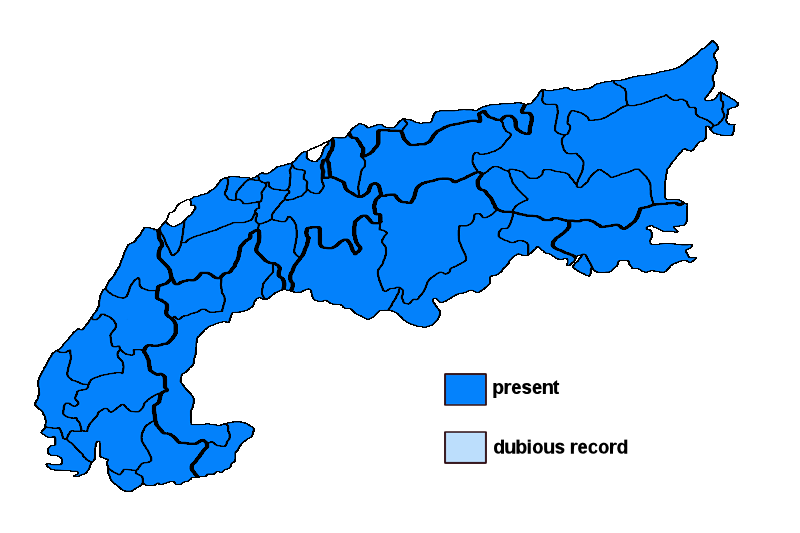Flavoparmelia caperata (L.) Hale
Syn.: Imbricaria caperata (L.) DC., Lichen caperatus L., Parmelia caperata (L.) Ach., Parmelia cylisphora (Ach.) Vain., Parmelia herreana Zahbr., Parmelia negativa Gyeln., Parmelia subglauca Nyl., Pseudoparmelia caperata (L.) Hale
Lichenised.
Substrate: bark, siliceous rocks
Altitudinal range: from the mesomediterranean belt (potential vegetation: evergreen broad-leaved forests dominated by Quercus ilex) to the montane belt (potential vegetation: deciduous forests dominated by Fagus sylvatica and closed coniferous forests with Picea abies)
Note: a mild-temperate lichen found on isolated deciduous, more rarely evergreen trees, only exceptionally on rocks (e.g. on north-exposed faces of basic siliceous rocks in dry-continental valleys of the Alps); common and abundant in the submediterranean belt throughout the Alps, rarer elsewhere.
Austria: Vorarlberg; Tirol; Salzburg; Kärnten; Steiermark; Oberösterreich; Niederösterreich (incl. Wien); Burgenland; Germany: Oberbayern; Schwaben; Switzerland: Bern; Glarus; Graubünden; Luzern; St. Gallen; Schwyz; Ticino; Uri; Unterwalden; Vaud; Valais; France: Alpes-de-Haute-Provence; Haute-Alpes; Alpes-Maritimes; Drôme; Isère; Savoie; Haute-Savoie; Vaucluse; Var; Italy: Friuli; Veneto; Trentino Alto Adige; Lombardia; Piemonte; Valle d'Aosta; Liguria; Slovenia: Alpine and Pre-Alpine Slovenia; Trnovsky Gozd; Liechtenstein





